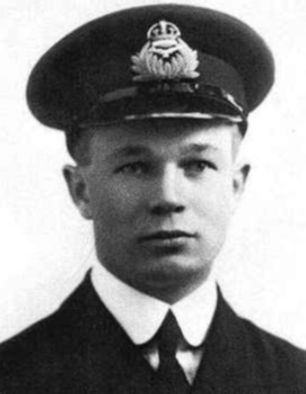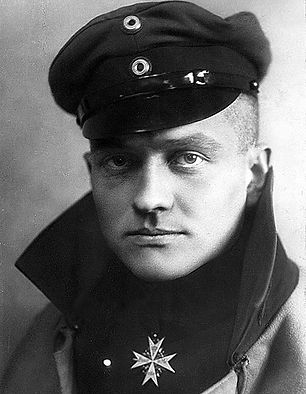
WHO WE ARE - Branch 192 of the Royal Canadian Legion
In 1931, Legion Branch 192 opened in it's original location on Bridge Street and moved into the current building on George Street in 1959-60. The branch is named for Capt. A. Roy Brown, most well known for fighting the Red Baron. However, the Evelyn Wilson Lounge honours a local First World War nursing sister who received the Royal Red Cross. Wilson was instrumental in establishing a Ladies Auxiliary for the branch, and was founding President of the Auxiliary, which is celebrating 80 years in 2024!
Branch 192 has been a proud part of the Carleton Place community, and continues to strive to serve it and its members with heart. Our Branch, Ladies Auxiliary (LA) and dual members are passionate, dedicated, and community minded. Sound like you? come check out one of our events, or drop in and say hi any afternoon! We are always interested in meeting and hearing from our neighbours, our community, and our future comrades.
WHO WE ARE - The Royal Canadian Legion
The Royal Canadian Legion is a Canadian organization dedicated to supporting veterans, military personnel, and their families. It was founded in 1925 and serves as a non-profit veterans' organization. The Legion provides various services, including assistance with pensions and benefits, community programs, and commemorative events to honor the sacrifices made by members of the Canadian Armed Forces. Additionally, the Legion plays a role in fostering remembrance and promoting the well-being of veterans and their communities. Membership is open to Canadian veterans, serving military members, and interested citizens who want to contribute to the Legion's mission.
WHO OUR BRANCH WAS NAMED FOR - Capt. A Roy Brown
Early Years
Brown was born to upper-middle-class parents in Carleton Place, 50 km (31 mi) west of Ottawa. His family home still exists, located at 38 Mill Street, just down from the Town Hall. Another source, the Carleton Place and Beckwith Heritage Museum, refers to the family home as being on Judson Street, and says that this was his birthplace. (more on wikipedia)
Flight Training
Brown enlisted in 1914 as an Officer Cadet at the Army Officers' Training. As a prerequisite to joining the Royal Naval Air Service (RNAS), Brown received flight training at the Wright Flying School near Dayton, Ohio, from September to November 1914. He was awarded Aero Club of America Pilot's Certificate No. 361 on 13 November,[1] and was confirmed as a flight sub-lieutenant in the RNAS on the 15th. (more on wikipedia)
Wartime Service
Brown set sail for England on 22 November 1914 and underwent further training at Chingford. On 2 May 1916, Brown crashed his Avro 504 emerging apparently unscathed, though next morning he experienced severe back pain as he had broken a vertebra. He spent two months in hospital and in September 1916 was posted to Eastchurch Gunnery School. In January 1917, he was sent to Cranwell to complete advanced training.
In March 1917, Brown was posted to No. 9 Naval Squadron, flying coastal patrols off the Belgian coast in Sopwith Pups. In April, "B" Flight, which included Brown, was attached to the Army's Royal Flying Corps to assist during the Battle of Arras. Brown fell ill at this time and missed "Bloody April", a period when British casualties were very high.
In June 1917, Brown was posted to No. 11 Naval Squadron, and in July he was briefly posted to No. 4 Naval Squadron before returning to No. 11 Naval Squadron later that month. On 17 July, he achieved his first "kill", an Albatros D.III, while flying a Pup, and gathered another three unconfirmed kills.
No. 11 was disbanded in mid-August 1917, and Brown returned to No. 9, equipped with the Sopwith Camel. He was promoted to flight lieutenant on 1 October,[6] and on 6 October, Brown was awarded the Distinguished Service Cross (DSC). (more on wikipedia)
His citation read:

Brown as a lieutenant
in the Royal Naval Air Service
Imperial War Museum, Public Domain
All information here is gathered from
Wikipedia
You can find more by
clicking here
Acting Flight Lieutenant (now Flight Lieutenant) Arthur Roy Brown, RNAS.
For the excellent work he has done on active service. On 3 September 1917, he attacked a two-seater Aviatik, in company with his flight. The enemy machine was seen to dive down vertically, the enemy observer falling over on the side of the fuselage shot. On 5 September 1917, in company with formation, he attacked an Albatross scout and two-seater, driving them away from our lines.
One machine was observed to go down apparently out of control. On 15 September 1917, whilst on patrol, he dived on two Aviatiks and three Albatross scouts, followed by his flight. He dived several times and picked out one enemy scout, firing about 200 rounds, when the enemy machine went down out of control, spinning on its back. On 20 September 1917, whilst leading his flight, he dived on five Albatross scouts. Flight Lieutenant Brown picked out one enemy machine and opened fire. One of his guns jammed, but he carried on with the other.
The enemy machine went down out of control and over on its back, and remained in that position for about thirty seconds, whilst Flight Lieutenant Brown continued firing until his other gun jammed. The enemy machine then disappeared in the clouds, still on its back. Another officer of the same patrol was later followed by four enemy machines, as he was separated from the formation. Both Flight Lieutenant Brown's guns were jammed, but he dived on the enemy machines and drove them off, thus undoubtedly saving the pilot's life.
Fighting The Red Baron
On the morning of 21 April 1918, No. 209 was on patrol when they became engaged in combat with fighters of Jagdstaffel 11, led by Manfred von Richthofen, the "Red Baron". A newcomer to No. 209, Brown's school friend, Lieutenant Wilfrid "Wop" May, had been instructed to stay clear of any fight and watch. May noticed an enemy pilot doing the same thing. That pilot was the Red Baron's cousin, Lt. Wolfram von Richthofen, who had been given the same instructions as May. May attacked Wolfram and soon found himself in the main fight, firing at several fleeting targets until his guns jammed. May dived out of the fight, and Manfred von Richthofen gave chase down to ground level. Brown saw May in trouble and dived steeply in an attempt to rescue his friend. His attack was necessarily of fairly short duration, as he was obliged to climb steeply to avoid crashing into the ground, losing sight for the moment of both Richthofen and May.
What happened next remains controversial to this day, but it seems highly probable that Richthofen turned to avoid Brown's attack, and then, instead of climbing out of reach of ground fire and prudently heading for home, remained at low altitude and resumed his pursuit of May, who was still zig-zagging, as he had not noticed that Richthofen had been momentarily distracted. It would have been physically impossible for Richthofen to have done this had he already received the wound from which he died.
(more on wikipedia)

Manfred von Richthofen, the "Red Baron"
Imperial War Museum, Public Domain


